Silicone Hydrogel Chemical Structure

The Chemistry Of Contact Lenses Compound Interest

Epa1 Silicone Hydrogel Composition And Silicone Hydrogel Contact Lenses Made From The Composition Google Patents

The Influence Of Structure And Morphology On Ion Permeation In Commercial Silicone Hydrogel Contact Lenses Saez Martinez 21 Journal Of Biomedical Materials Research Part B Applied Biomaterials Wiley Online Library

Contact Lens Spectrum Modern Contact Lens Materials A Clinical Performance Update
Properties Of Hydrogel And Silicone Hydrogel Contact Lens

Optometric Management Looking At Silicone Hydrogels Across Generations
The only issue is that these silicone is hydrophobic (waterrepelling) As such, it’s prone to problems such as sticking to the eyes if used on its own To solve this problem, the first generation of silicone hydrogel lenses used surface treatments in order to make them hydrophilic.
Silicone hydrogel chemical structure. And b washing and packaging the polymeric lens body to provide a silicone hydrogel contact lens. Hydrogelpolymer hybrids have been widely used for various applications such as biomedical devices and flexible electronics However, the current technologies constrain the geometries of hydrogelpolymer hybrid to laminates consisting of hydrogel with silicone rubbers This greatly limits functionality and performance of hydrogelpolymer–based devices and machines. The general formula for a siloxanehydrogel lens is a hydrophobic, oxygen diffusive main chain used in combination with wettable, hydrophilic monomers The siloxane main chain may consist of either methacrylated polydimethylsiloxane (PDMS), trimethylsiloxysilyl (TRIS) or perfluoropolyethers (PFPE).
It is generally related to chemical structure There was a visible cut designated by a dashed line on the methylphenyl silicone and hydrogelcoated surfaces after the scratch experiment To demonstrate selfhealing capability, water droplets were placed on the cuts and images were taken after the droplets evaporated. Save as PDF Page ID 1132;. Thickness of hydrogel coating on the silicone hydrogel core was assessed using Raman spectroscopy To investigate the layered structure of the material, depth spectra of the lenses were recorded.
Silicone polymers, more properly called polysiloxanes, do not have carbon as part of the backbone structure Although silicon is in the same group as carbon in the periodic table, it has quite different chemistry. The influence of structure and morphology on ion permeation in commercial silicone hydrogel contact lenses Virginia SaezMartinez Biomaterials Research Unit, Chemical Engineering and Applied Chemistry, Aston University, Birmingham, UK. A hydrogel is a threedimensional (3D) network of hydrophilic polymers that can swell in water and hold a large amount of water while maintaining the structure due to chemical or physical crosslinking of individual polymer chains Hydrogels were first reported by Wichterle and Lím (1960) By definition, water must constitute at least 10% of.
Hydrogels are cross linked polymers that have hydrophillic groups They are often polymers containing. A hydrogel is a threedimensional (3D) network of hydrophilic polymers that can swell in water and hold a large amount of water while maintaining the structure due to chemical or physical crosslinking of individual polymer chains Hydrogels were first reported by Wichterle and Lím (1960) By definition, water must constitute at least 10% of. Hydrogelpolymer hybrids have been widely used for various applications such as biomedical devices and flexible electronics However, the current technologies constrain the geometries of hydrogelpolymer hybrid to laminates consisting of hydrogel with silicone rubbers This greatly limits functionality and performance of hydrogelpolymer–based devices and machines.
Silicone polymers, more properly called polysiloxanes, do not have carbon as part of the backbone structure Although silicon is in the same group as carbon in the periodic table, it has quite different chemistry. Manipulate the shape, structure, and architecture of hydrogels with enhanced control and spatial precision and silicone is required for a wide range of ap anchored chemical bonds (Fig 2C) ( 40, 59) The. Chemical structure of a linear silicone polymer (polydimethylsiloxane) Si CH 3 CH 3 Cl Cl Chemical structure of a silane (dimethyldichlorosilane) From SemiOrganic Plastics Silicones are a special group of plastics The term “plastic” is normally used to refer to organic materials that do not occur in nature Silicones are classed.
The silicone hydrogel contact lens, also known as siloxane lenses, show impressive permeability (PDMS has a DK of 600 Barres), while retaining the comfort, wetability, and biofilm resistance of nonsilicon based hydrogels 24 Unlike hydrogel lenses however, the oxygen permeability of silicone hydrogels decreases exponentially as water content. A composition comprising a carbocyclic group and a hydrophilic moiety attached thereto an alpha, betaunsaturated organosilicon compound Such compounds are useful in developing water absorbing siliconehydrogel films Siliconehydrogel films provide increased oxygen to pass through a lens or other treated materials. What is claimed is 1 A method of manufacturing a silicone hydrogel contact lens, said method comprising a curing a polymerizable composition comprising at least one siloxane monomer and at least one hydrophilic vinylcontaining monomer in a contact lens mold to form a polymeric lens body;.
A silicone hydrogel contact lens material, with a unique chemical and physical structure has been designed for longterm ocular performance Enhancement of this silicone hydrogel contact lens material was achieved through surface modification using a crosslinkable bioinspired 2methacryloyloxyethyl phosphorylcholine (MPC) polymer, which creates a soft surface gel layer on the silicone. Contact lens research focuses on ways to improve the lenses and solutions used with them to reduce the incidence of microbial contamination While increased oxygenation offered by silicone hydrogels deters infection, the structure of the lenses actually makes it easier for bacteria to colonize the lenses. A hydrogel is an example of a smart materialIt can change its structure in response to salt concentration, pH and temperature What is the Structure of a Hydrogel?.
Our method does not alter the chemical structure and retains the properties of the original hydrogel formulation 3, 15, The double‐hydrophobic‐coated layer on the surface can prevent the penetration of water, similar to mammalian skin. The resulting chemical structures, and the proposed interface bonding mechanism between AP hydrogel and (meth)acrylate polymer From Fig 2 (D and E), the hydrogel precursor solution is solidified to a layer of hydrogel network structure upon a patterned UV projection The photopolymerization crosslinks acrylamide and. Described are silicone hydrogels that are more biocompatible than current ocular materials The silicone hydrogels are formed from a reactive monomer mixture comprising a mixture.
The structure of poly(Nisopropylacrylamide)−clay nanocomposite gels (NC gel) is investigated The sophisticated contrast variation smallangle neutron scattering technique leads to obtain the partial scattering functions of each component quantitatively The extracted partial scattering functions of clay, polymer, and the polymer−clay crossterm are analyzed in detail, and the selective. (A) Chemical structure of crosslinked silicone hydrogels for smart contact lens (B) Attenuated total reflectance Fourier transform infrared spectroscopy (ATRFTIR) of silicone hydrogel contact lens and Lotrafilcon A (C) Transmittance spectrum of silicone hydrogel and poly(2hydroxyethyl methacrylate) (PHEMA) hydrogel contact lenses. Manipulate the shape, structure, and architecture of hydrogels with enhanced control and spatial precision and silicone is required for a wide range of ap anchored chemical bonds (Fig 2C) ( 40, 59) The.
Save as PDF Page ID 1132;. The biomimetic synthetic methacrylate monomer containing a phosphorylcholine group, 2methacryloyloxyethyl phosphorylcholine (MPC), has been widely used to improve the surface property of biomaterials In the current report, both hydrophilic and antifouling surfaces were prepared on silicone hydrogels with MPC grafted by UVinduced free radical polymerization. Silicone Polymers Last updated;.
Smart Silicone™ chemistry shapes silicone into a network of channels that are much more efficient at delivering oxygen through the lens, so less raw silicon is needed for optimal oxygen permeability This leaves room for more hydrophilic material, creating a lens with the best of both the hydrogel and silicone hydrogel worlds. The Bausch Lomb INFUSE poster presentations will be accessible to conference attendees via the GSLS website from Jan 2123, 21 The poster presentations are as follows Scheuer, Catherine et. Hydrogelpolymer hybrids have been widely used for various applications such as biomedical devices and flexible electronics However, the current technologies constrain the geometries of hydrogelpolymer hybrid to laminates consisting of hydrogel with silicone rubbers This greatly limits functionality and performance of hydrogelpolymer–based devices and machines.
A silicone hydrogel composition is disclosed The composition includes at least one silicone macromer, a hydroxyfunctionalized siliconecontaining monomer, a first hydrophibic monomer and at least one crosslinker, in which the first hydrophibic monomer is Nvinyl pyrrolidone The silicone macromer and the hydroxyfunctionalized siliconecontaining monomer are mutually soluble with N. Smart Silicone chemistry shapes silicone into a network of channels that are much more efficient at delivering oxygen through the lens, so less raw silicon is needed for optimal oxygen permeability This leaves room for more hydrophilic material, creating a lens with the best of both the hydrogel and silicone hydrogel worlds. Selection of commercially available silicone hydrogel contact lenses with their morphological structure and chemical composition Differential scanning calorimetry measured the water structuring properties through subdivision of the freezing water component into polymerassociated water (loosely bound to the polymer matrix) and.
1) Silicone hydrogel contact lens The silicone hydrogel used for this application is called Lotrafilcon AThe synthesis ofLotrafilcon A is illustrated in 22 Figure1 A major part of the composition consists of a polyfluorosilicone macromer with 2isocyanato ethyl methacrylate The macromer contributes mainly to high oxygen permeability. Silicone Hydrogels Materials for Contact Lens Applications 295 to other hydrophilic materials, most of the details from the structure of these materials remain unknown 6 Resulting CL polymers are named according to the criteria of the United States Adopted Names Council (USAN) A CL generic name. In short, silicon is a naturally occurring chemical element, whereas silicone is a synthetic substance Silicon is the 14th element on the periodic table.
A silicone hydrogel contact lens material, with a unique chemical and physical structure has been designed for longterm ocular performance Enhancement of this silicone hydrogel contact lens material was achieved through surface modification using a crosslinkable bioinspired 2methacryloyloxyethyl. 1 HNMR was used to characterize the chemical structure, using D 2 O as a solvent 25 HA and sodium alginate (SAL) were used to improve cellular structure and mechanical properties by crosslinking with EDC, as a carboxylactivating agent, and adipic dihydrazide (ADH) as a crosslinker The reaction was carried out at pH 475 by adding an acetate. Products from Oil Polymers Smart Materials Hydrogels Sodium Polyacrylate and Hydrogen Bonding What is a Hydrogel?.
And b washing and packaging the polymeric lens body to provide a silicone hydrogel contact lens. P 2229 P 3031 5 Product Map Structure (3 types) Resin, rubber & resin coated rubber FeaturesAvailable in a variety of particle sizes to meet a range of requirements Silicone Powders Features Surface Modifiers designed to use as leveling agents, defoamers, slip agents, and in paints and coatings. The physicomechanical and chemical properties of the IPN silicone hydrogels, as water content, protein resistance, contact angle, optical transparency and mechanical properties were evaluated The results revealed that DMA and PEGMA incorporated in IPN silicone hydrogel improves the hydrophilicity of silicone hydrogel with.
Smart Silicone™ chemistry shapes silicone into a network of channels that are much more efficient at delivering oxygen through the lens, so less raw silicon is needed for optimal oxygen permeability This leaves room for more hydrophilic material, creating a lens with the best of both the hydrogel and silicone hydrogel worlds. In this work, four siliconehydrogel contact lenses, Purevision® 2 (balafilcon A), Air Optix Aqua™ (lotrafilcon B), Acuvue® Oasys™ (senofilcon A) and Biofinity™ (comfilcon A), and one conventional lens, Acuvue® 2 (etafilcon A), were submitted during 5 weeks at a temperature of 37 °C under an air atmosphere. Chemical structure of a linear silicone polymer (polydimethylsiloxane) Si CH 3 CH 3 Cl Cl Chemical structure of a silane (dimethyldichlorosilane) From SemiOrganic Plastics Silicones are a special group of plastics The term “plastic” is normally used to refer to organic materials that do not occur in nature Silicones are classed.
Previously, swelling‐resistant hydrogels were developed by engineering the internal chemical structure;. This surface phase separation structure made SiMA hydrogel more difficult to be wetted by water or PBS buffer, ie, more hydrophobic than TRIS hydrogel On the basis of these results, we propose that the phase separation structure as well as the nature of silicon monomers might be the fundamental reasons of surface hydrophilicity. The typical chemical structure of gelatin is represented in Figure 10 Figure 10 Chemical structure of gelatin 92 Application of Gelatin in the Market E Papas, C Skotnitsky, and D F Sweeney, “Silicone hydrogel contact lenses and the ocular surface,” The Ocular Surface, vol 4, no 1, pp 24–43, 06.
Silicone Polymers Last updated;. Part 2 of this review will investigate these differences and demonstrate why silicone hydrogels materials are so unique References 1 Tighe B Silicone hydrogels Structure, properties and behaviour in Silicone Hydrogels Continuous Wear Contact Lenses, D Sweeney, Editor Oxford, ButterworthHeinemann,04, pp 1 27 2. * Bausch Lomb INFUSE ™ silicone hydrogel daily disposable contact lenses are branded as BAUSCH LOMB ULTRA® ONE DAY daily disposable silicone hydrogel contact lenses in Canada References 1.
HEMAbased hydrogels have an abundance of easily accessible chemical functional groups for modification, rather than silicone In some cases, siliconebased hydrogels were more suitable to host drugs, such as the vitamin E barrier 27. CROSS REFERENCE TO RELATED APPLICATIONS This application is a continuation of and claims the benefit of PCT Application No PCT/US13/ entitled “Antifouling System Comprising Silicone Hydrogel” filed on May 23, 13, which claims the benefit of US Provisional Patent Application No 61/765,450 entitled “Antifouling System Comprising Silicone Hydrogel” filed on Feb 15, 13. Siloxane is a kind of organosilicon compounds which is composed of –Si–O–Si–O– backbones with side chains R attached to the silicon atoms (R 2 SiO), where R is a hydrogen atom or an organic radical possibly bearing functional groups Polymers of siloxanes are referred as silicones, such as polydimethylsiloxane (PDMS), which is the dominant polymer in the silicone industry.
Today Applications of hydrogels in bioengineering Covalent hydrogels structure and chemistry of biomedical gels Thermodynamics of hydrogel swelling Reading NA Peppas et al, ‘Physicochemical foundations and structural design of hydrogels in medicine and biology,’ Annu Rev Biomed Eng, 2, 929 (00). The typical chemical structure of gelatin is represented in Figure 10 Figure 10 Chemical structure of gelatin 92 Application of Gelatin in the Market E Papas, C Skotnitsky, and D F Sweeney, “Silicone hydrogel contact lenses and the ocular surface,” The Ocular Surface, vol 4, no 1, pp 24–43, 06. The chemical structure and the possible organic–inorganic interactions in the hydrogel specimens in a wavenumber range from 4000 to 500 cm 1 In addition, the mechanical properties of the GelMa hydrogels were measured using tensile tests conducted with the EZTest machine (Shimadzu, Kyoto, Japan) The specimens were printed into the shape of.
Yes and no A recent study published in the British Journal of Ophthalmology found a significantly lower risk of severe keratitis among silicone hydrogel users, but a higher risk of nonsevere keratitis The 12month, hospitalbased study conducted in the UK. The influence of structure and morphology on ion permeation in commercial silicone hydrogel contact lenses Virginia SaezMartinez Biomaterials Research Unit, Chemical Engineering and Applied Chemistry, Aston University, Birmingham, UK. This surface phase separation structure made SiMA hydrogel more difficult to be wetted by water or PBS buffer, ie, more hydrophobic than TRIS hydrogel On the basis of these results, we propose that the phase separation structure as well as the nature of silicon monomers might be the fundamental reasons of surface hydrophilicity.
What is claimed is 1 A method of manufacturing a silicone hydrogel contact lens, said method comprising a curing a polymerizable composition comprising at least one siloxane monomer and at least one hydrophilic vinylcontaining monomer in a contact lens mold to form a polymeric lens body;. The structure of poly(Nisopropylacrylamide)−clay nanocomposite gels (NC gel) is investigated The sophisticated contrast variation smallangle neutron scattering technique leads to obtain the partial scattering functions of each component quantitatively The extracted partial scattering functions of clay, polymer, and the polymer−clay crossterm are analyzed in detail, and the selective. Although all silicone hydrogels share the hallmark of higher oxygen permeability, there is notable diversity in each silicone hydrogel material's polymer chemistry and resulting clinical performance This is akin to the tremendous diversity within hydrogel materials, which range from the older polymacon to newer hioxifilcon, and within GP.
Featuring a unique chemical structure, MyDay™ lenses (stenfilcon A) create efficient channels for oxygen delivery to the cornea With less silicon needed to achieve the desired oxygen permeability levels, the efficient silicone network allows for increased hydrophilic materials “As the silicone hydrogel daily disposable category has. Production of hydrogels • Controlled by chemistry of chain and method of crosslinking • Chemical crosslinker • Selfassembly – Dynamic and labile gels generally – Usually pronounced yield stress – Triggered by temperature or environment Polymer and Plastics in Medical Devices, SF 13 Cambridge Polymer Group (5). * Bausch Lomb INFUSE ™ silicone hydrogel daily disposable contact lenses are branded as BAUSCH LOMB ULTRA® ONE DAY daily disposable silicone hydrogel contact lenses in Canada References 1.
The physicomechanical and chemical properties of the IPN silicone hydrogels, as water content, protein resistance, contact angle, optical transparency and mechanical properties were evaluated The results revealed that DMA and PEGMA incorporated in IPN silicone hydrogel improves the hydrophilicity of silicone hydrogel with. Although silicone hydrogel contact lenses possess high oxygen permeability, their stiffness also increases with the decrease of water content, which will be uncomfortable to patients because the cornea is soft The structure of hydrogel is shown in Figure 3 Chemical reactions leading to the attachment of liposomes onto the surfaces of. This surface phase separation structure made SiMA hydrogel more difficult to be wetted by water or PBS buffer, ie, more hydrophobic than TRIS hydrogel On the basis of these results, we propose that the phase separation structure as well as the nature of silicon monomers might be the fundamental reasons of surface hydrophilicity.
Editorial Silicone Hydrogels A New Perspective For Lens Care Classifying Silicone Hydrogels

Top Chemical Structure Of The Pyrocatechol Violet Based Dye Download Scientific Diagram

Making Better Contact Lenses
Silicone Hydrogel Lens Materials Download Table

Protein Deposition On A Lathe Cut Silicone Hydrogel Contact Lens Material Topic Of Research Paper In Clinical Medicine Download Scholarly Article Pdf And Read For Free On Cyberleninka Open Science Hub

Figure 1 From Super Hydrophilic Silicone Hydrogels With Interpenetrating Poly 2 Methacryloyloxyethyl Phosphorylcholine Networks Semantic Scholar
Properties Of Hydrogel And Silicone Hydrogel Contact Lens

Epa1 Silicone Hydrogel Composition And Silicone Hydrogel Contact Lenses Made From The Composition Google Patents

Contact Lens Spectrum The Genesis Of Silicone Hydrogels
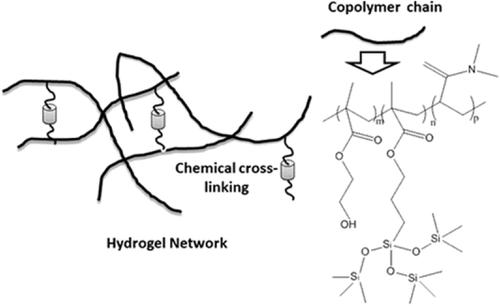
Structure Property Correlation Of Silicone Hydrogels Based On 3 Tris Trimethylsilyloxy Silyl Propyl Methacrylate Monomer Journal Of Applied Polymer Science X Mol

Epa1 Silicone Hydrogel Soft Contact Lens Having Wettable Surface Google Patents
Pdf Preparation Material Properties And Antimicrobial Efficacy Of Silicone Hydrogel By Modulating Silicone And Hydrophilic Monomer
2
Editorial Should Silicone Hydrogels Be Placed In A Separate Fda Soft Contact Lens Category

Biomedical Applications Of Hydrogels A Review Of Patents And Commercial Products Sciencedirect

Synthesis And Biocompatibility Of A Novel Silicone Hydrogel Containing Phosphorylcholine Sciencedirect

Epa1 Uv Blocking Silicone Hydrogel Composition And Silicone Hydrogel Contact Lens Containing Thereof Google Patents
Pdf In Vivo Dehydration Of Silicone Hydrogel Contact Lenses
Advancing And Receding Contact Angles For All The Silicone Hydrogel Download Scientific Diagram

Silicone Hydrogel An Overview Sciencedirect Topics
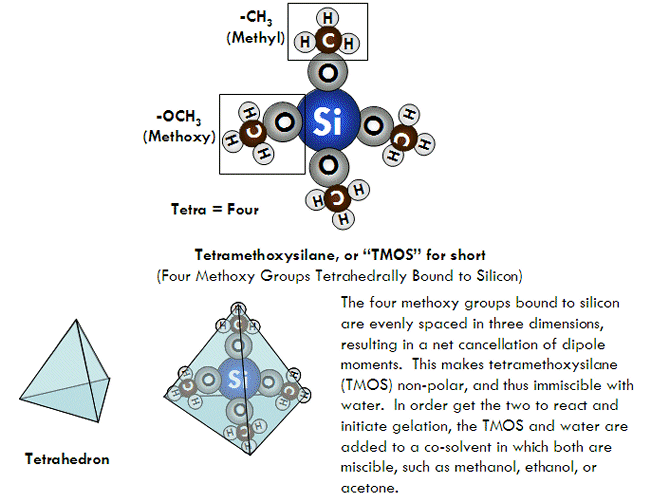
Aerogel Org Silica Aerogel

Advances In Chemistry And Composition Of Soft Materials For Drug Releasing Contact Lenses Rsc Advances Rsc Publishing Doi 10 1039 D0rah
Editorial Silicone Hydrogels A New Perspective For Lens Care Classifying Silicone Hydrogels

Contact Lenses As Drug Controlled Release Systems A Narrative Review

Epa1 Silicone Hydrogel Composition And Silicone Hydrogel Contact Lenses Made From The Composition Google Patents
Properties Of Hydrogel And Silicone Hydrogel Contact Lens
Smart Silicone Chemistry Coopervision

Biomedical Applications Of Hydrogels A Review Of Patents And Commercial Products Sciencedirect
Pdf Imaging Protein Deposits On Contact Lens Materials

Contact Lens Spectrum Font Color Special Edition 11 Font Br The Many Faces Of Silicone Hydrogel Contact Lenses
Pdf Silicone Hydrogel Contact Lenses And The Ocular Surface
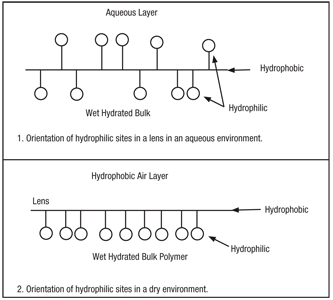
Surface And Polymer Chemistry The Quest For Comfort

Epa1 Silicone Hydrogel Composition And Silicone Hydrogel Contact Lenses Made From The Composition Google Patents
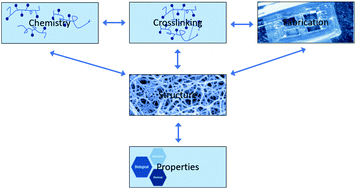
Considerations For Hydrogel Applications To Neural Bioelectronics Journal Of Materials Chemistry B Rsc Publishing

Optometric Management The Development Of Dailies Total1 Water Gradient Contact Lenses
Molecular Structure Of Key Components In Silicone Based Contact Lens Download Scientific Diagram
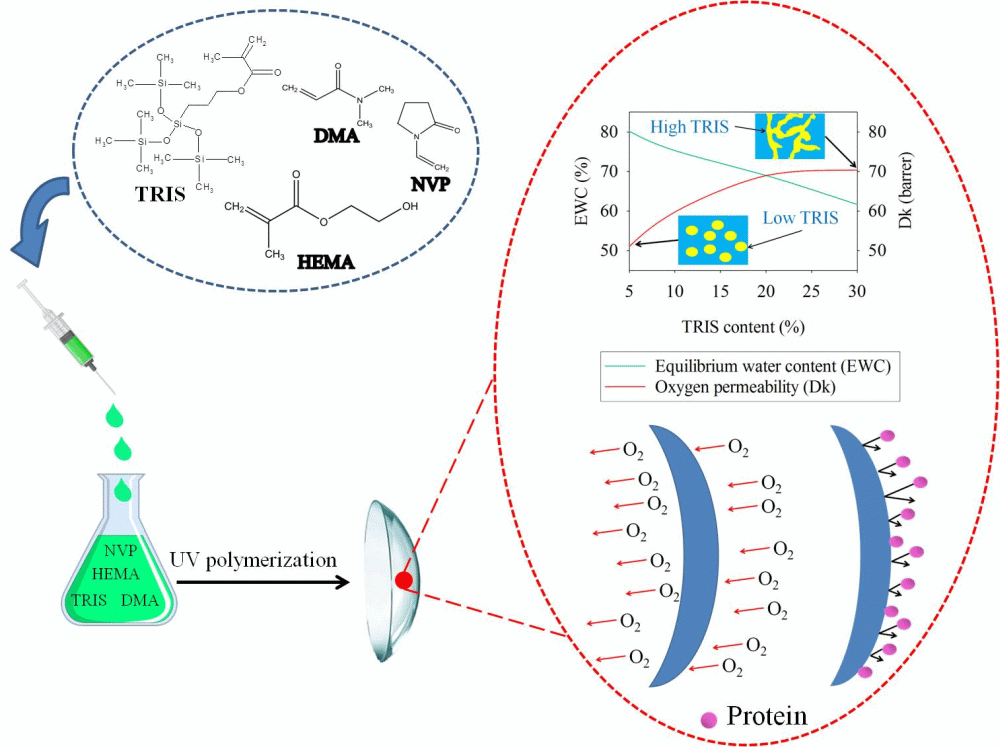
Polymers Free Full Text Synthesis And Characterization Of Silicone Contact Lenses Based On Tris Dma Nvp Hema Hydrogels Html

Contact Lens Materials A Materials Science Perspective Abstract Europe Pmc
Smart Silicone Chemistry Coopervision Australia
Editorial Silicone Hydrogels A New Perspective For Lens Care Classifying Silicone Hydrogels

Improvement Of The Surface Wettability Of Silicone Hydrogel Contact Lenses Via Layer By Layer Self Assembly Technique Sciencedirect
Editorial The Physical And Clinical Characteristics Of Silicone Hydrogel Lenses How They Work
Editorial Trends And Developments In Silicone Hydrogel Materials
Www Mdpi Com 1996 1944 12 2 261 Pdf Vor

The Chemistry Of Contact Lenses Compound Interest

Epa1 Silicone Hydrogel Composition And Silicone Hydrogel Contact Lenses Made From The Composition Google Patents

Contact Lens Spectrum Modern Contact Lens Materials A Clinical Performance Update
Properties Of Hydrogel And Silicone Hydrogel Contact Lens
Properties Of Hydrogel And Silicone Hydrogel Contact Lens
Properties Of Hydrogel And Silicone Hydrogel Contact Lens

Epa1 Dimensionally Stable Silicone Hydrogel Contact Lenses Google Patents
Properties Of Hydrogel And Silicone Hydrogel Contact Lens

Supramolecular Silicone Coating Capable Of Strong Substrate Bonding Readily Damage Healing And Easy Oil Sliding Science Advances

Epa1 Uv Blocking Silicone Hydrogel Composition And Silicone Hydrogel Contact Lens Containing Thereof Google Patents
Properties Of Hydrogel And Silicone Hydrogel Contact Lens

An Introduction To Hydrogels And Some Recent Applications Intechopen

Pdf The Effect Of Lens Wear On Refractive Index Of Conventional Hydrogel And Silicone Hydrogel Contact Lenses A Comparative Study Semantic Scholar
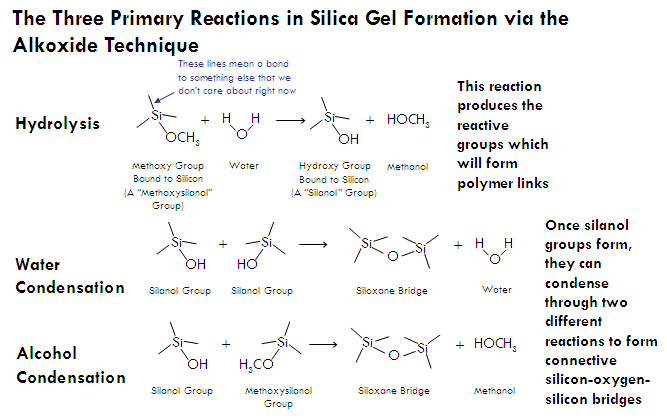
Aerogel Org Silica Aerogel

Contact Lens Spectrum Lens Distinctions
The Structural Formula Of The Silicone Hydrogel Material Download Scientific Diagram

Novel Silicone Hydrogel Based On Pdms And Pegma For Contact Lens Application Sciencedirect

Order Online Your Myday Daily Disposable Lenses At Lensdeal

Giihyj4pdgwusm
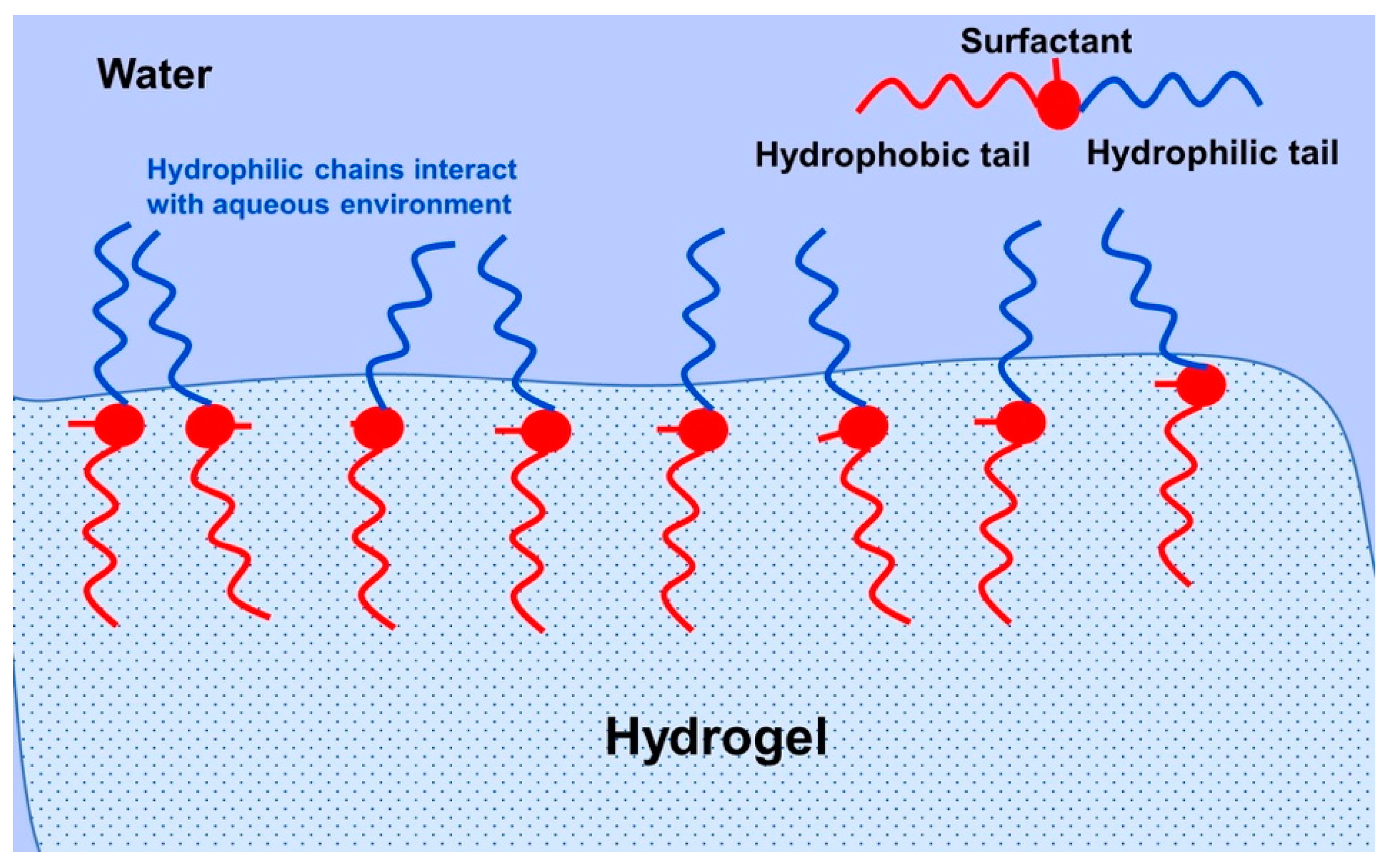
Materials Free Full Text Contact Lens Materials A Materials Science Perspective Html

History And Applications Of Hydrogels Insight Medical Publishing
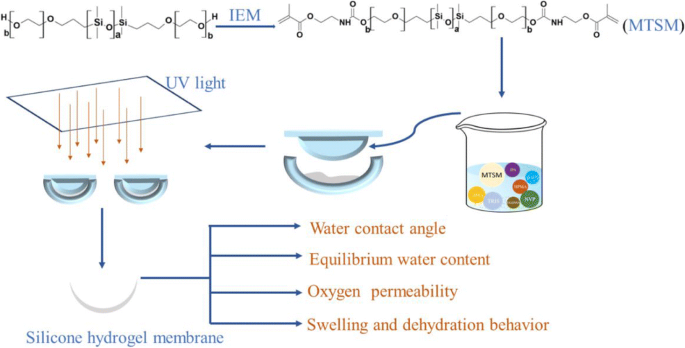
The Influences Of Poly Ethylene Glycol Chain Length On Hydrophilicity Oxygen Permeability And Mechanical Properties Of Multicomponent Silicone Hydrogels Springerlink
Www Contactlensjournal Com Article S1367 0484 18 8 Pdf

The Influence Of Structure And Morphology On Ion Permeation In Commercial Silicone Hydrogel Contact Lenses Saez Martinez 21 Journal Of Biomedical Materials Research Part B Applied Biomaterials Wiley Online Library
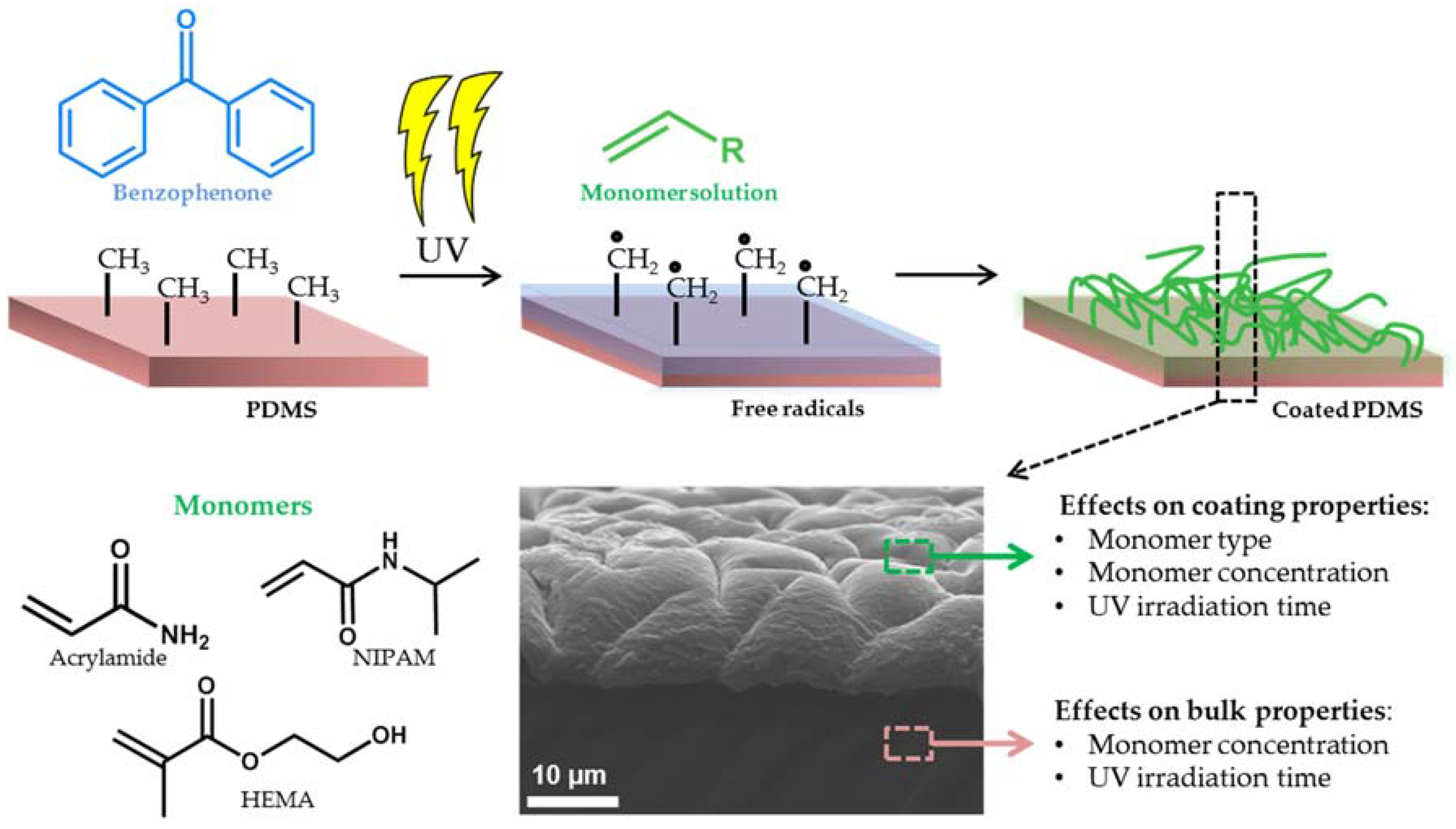
Polymers Free Full Text The Relationship Between Bulk Silicone And Benzophenone Initiated Hydrogel Coating Properties
Properties Of Hydrogel And Silicone Hydrogel Contact Lens

Contact Lens Spectrum Ensuring Wettability And Comfort
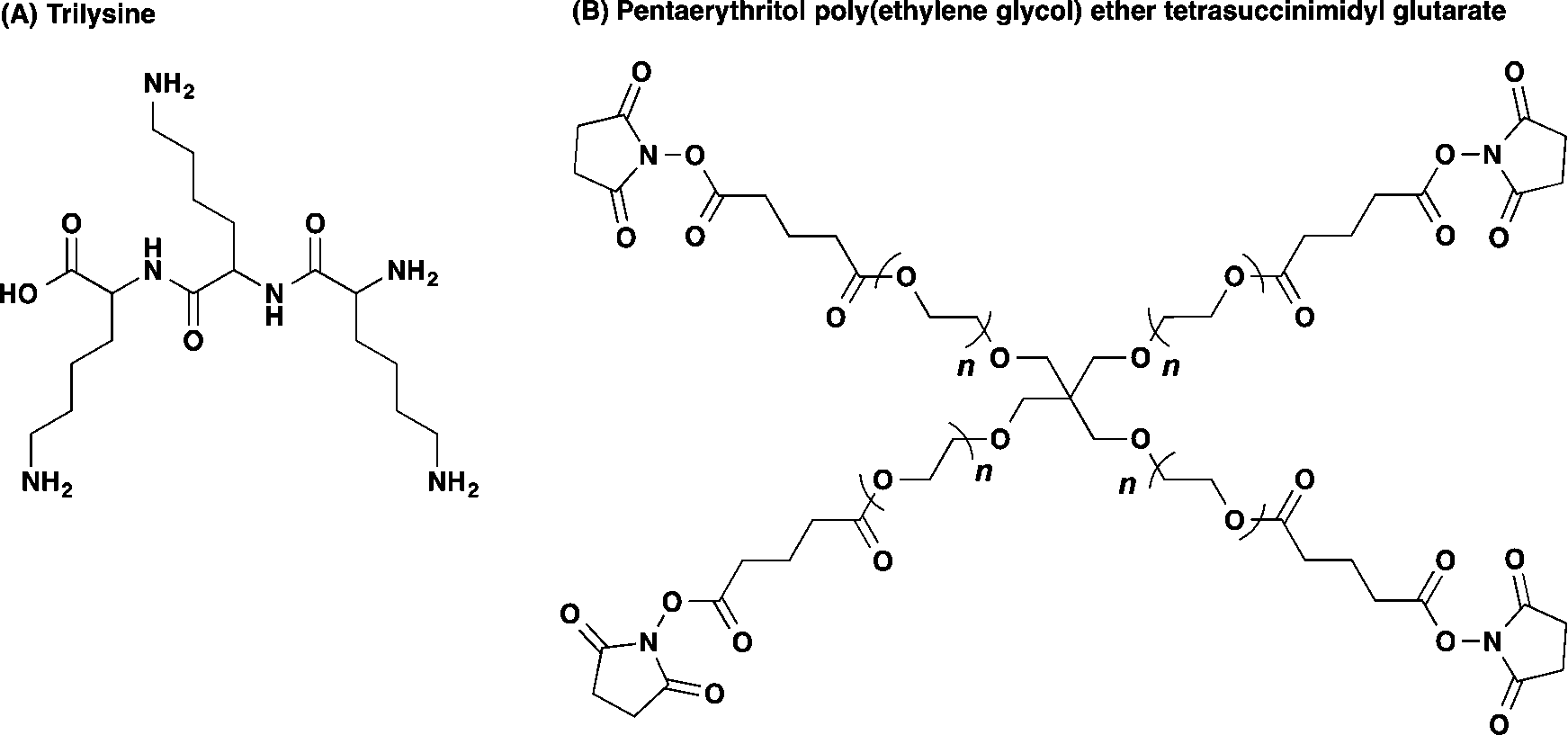
The Chemistry And Engineering Of Polymeric Hydrogel Adhesives For Wound Closure A Tutorial Chemical Society Reviews Rsc Publishing Doi 10 1039 C4csb
Molecular Structure Of Key Components In Silicone Based Contact Lens Download Scientific Diagram
Properties Of Hydrogel And Silicone Hydrogel Contact Lens
Www Contactlensjournal Com Article S1367 0484 16 5 Pdf
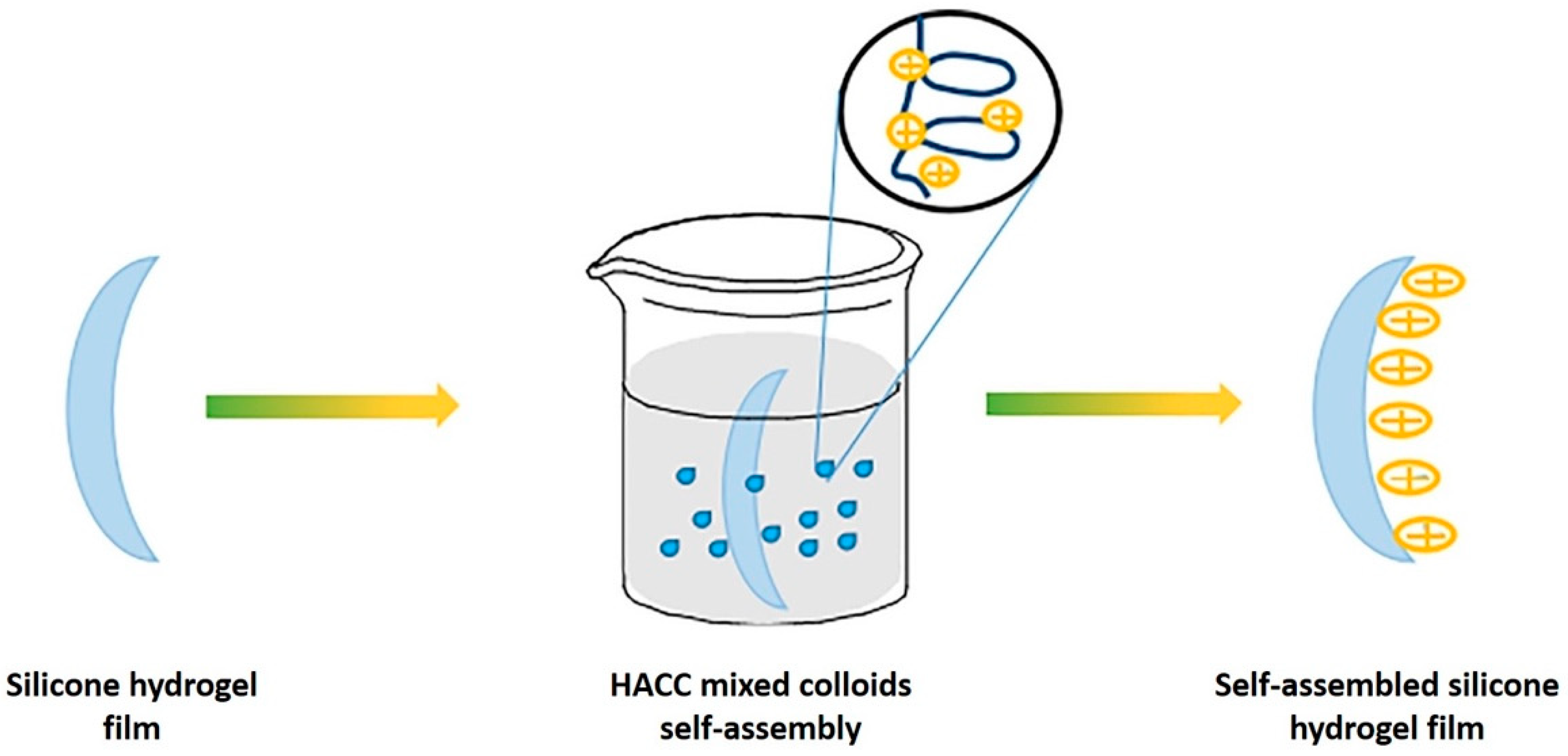
Materials Free Full Text Contact Lens Materials A Materials Science Perspective Html
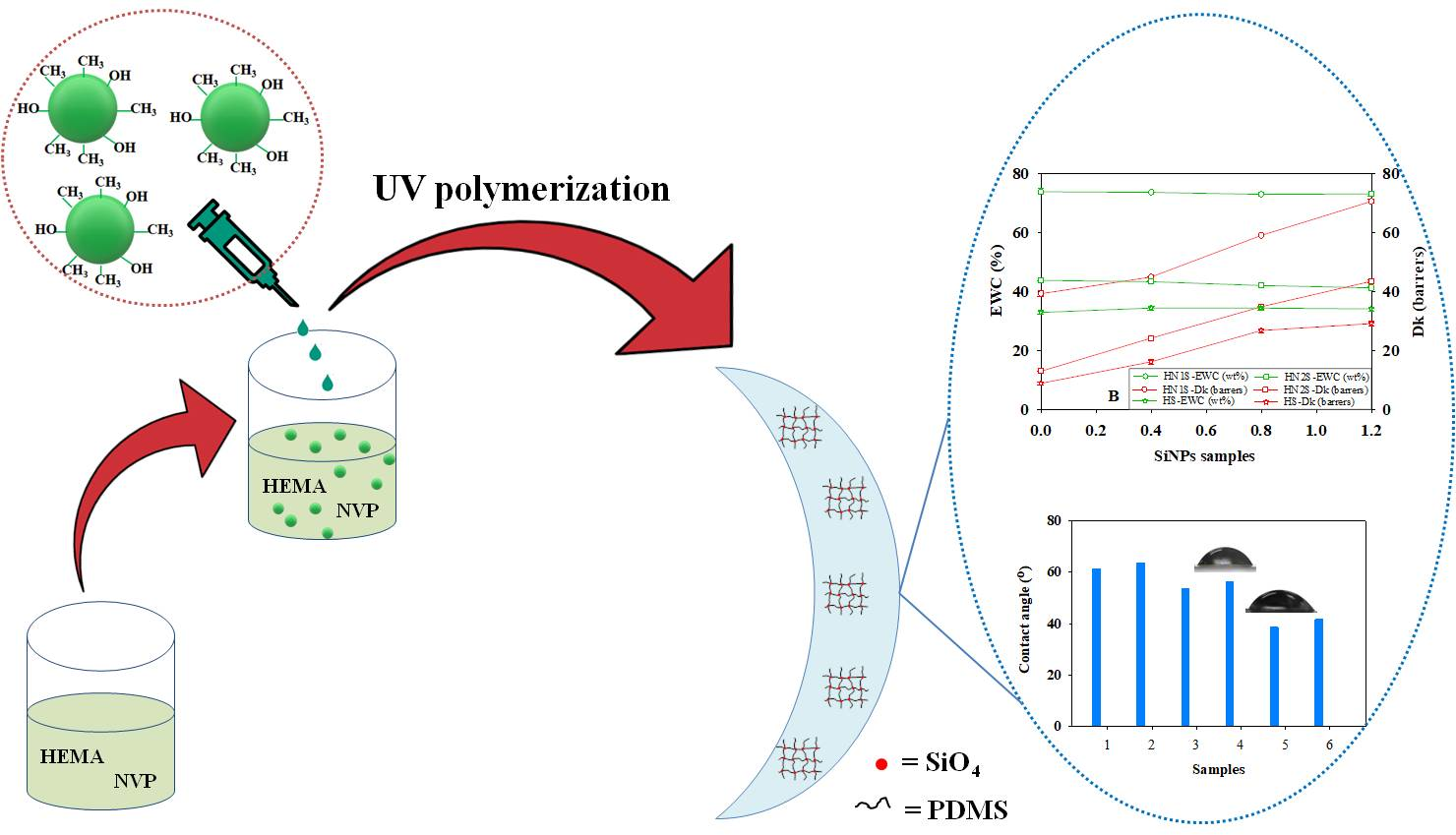
Polymers Free Full Text The Ophthalmic Performance Of Hydrogel Contact Lenses Loaded With Silicone Nanoparticles Html
Editorial The Physical And Clinical Characteristics Of Silicone Hydrogel Lenses How They Work
Www Mdpi Com 1996 1944 12 2 261 Pdf Vor

Double Hydrophobic Coating Through Quenching For Hydrogels With Strong Resistance To Both Drying And Swelling Mredha Advanced Science Wiley Online Library
Www Mdpi Com 1996 1944 12 2 261 Pdf Vor
Http Etd Auburn Edu Bitstream Handle 2551 Binder1 Pdf Sequence 2
Q Tbn And9gctvvpsrrxvz3a3glrgizldyi38siqc Ipe5q udk3 0gimbat Usqp Cau
Editorial Silicone Hydrogel Contact Lens Materials Update Part 2
Www Contactlensjournal Com Article S1367 0484 16 5 Pdf
The Structural Formula Of The Silicone Hydrogel Material Download Scientific Diagram

Oxygen And Ionic Transport In Hydrogel And Silicone Hydrogel Contact Lens Materials An Experimental And Theoretical Study Sciencedirect

Contact Lens Spectrum Silicone Hydrogel Material And Surface Properties

Epa1 Silicone Hydrogel Composition And Silicone Hydrogel Contact Lenses Made From The Composition Google Patents
Editorial The Physical And Clinical Characteristics Of Silicone Hydrogel Lenses How They Work

Epa1 Silicone Hydrogel Soft Contact Lens Having Wettable Surface Google Patents

Epa1 Silicone Hydrogel Composition And Silicone Hydrogel Contact Lenses Made From The Composition Google Patents

Structure Property Correlation Of Silicone Hydrogels Based On 3 Tris Trimethylsilyloxy Silyl Propyl Methacrylate Monomer Sharma Journal Of Applied Polymer Science Wiley Online Library

Oxygen And Ionic Transport In Hydrogel And Silicone Hydrogel Contact Lens Materials An Experimental And Theoretical Study Sciencedirect
2



